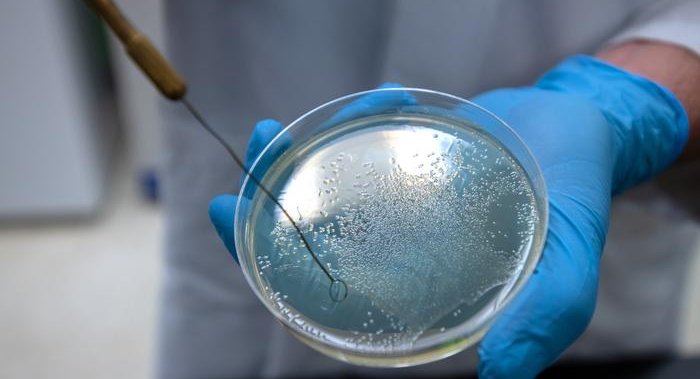
Some of the world’s most deadly bacteria exhibit a peculiar craving for human blood, a discovery shedding new light on the mechanics of bloodstream infections and possible treatments.
Termed “bacterial vampirism” by researchers, this phenomenon, detailed in a study published Tuesday in the journal eLife, found that certain bacteria are drawn to the liquid component of blood, known as serum, where they scavenge for essential nutrients.
“This chemical that’s in our blood that we use for food is also something that these pathogenic bacteria recognize as food… they are attracted to human blood and that’s why they’re swimming towards it,” explained Arden Baylink, a professor at Washington State University’s College of Veterinary Medicine and corresponding author for the research.
“This includes a lot of bacteria that people are probably familiar with… E coli and salmonella,” he told Global News.
The bacteria the researchers looked at are called multidrug-resistant Enterobacteriaceae pathogens, which the World Health Organization has labelled “priority pathogens.” These pathogens belong to a group of 12 bacterial families deemed the most significant threat to human health because of their antibiotic resistance, the WHO stated.

Enterobacterales can also be “opportunistic pathogens that cause different types of infections such as urinary tract infections, pyelonephritis, sepsis, pneumonia and meningitis,” according to Health Canada.
The researchers discovered that at least three types of Enterobacteriaceae pathogens, commonly found in people’s intestinal tracts — salmonella, E. coli and Citrobacter koseri — are attracted to human blood.
The latest health and medical news
emailed to you every Sunday.
Baylink explained that people with inflammatory bowel diseases (IBD), such as Crohn’s disease and ulcerative colitis, are particularly vulnerable to these bacteria, which typically reside in the gut.
“For normal healthy people, they’re not going to be exposed to a lot of blood in the intestinal tract. But there are certain individuals where they’re at higher risk,” he said.
“There are some people that have chronic bleeding within their intestinal tract. These people, including those with inflammatory bowel disease, basically have little cuts inside of their intestines that are bleeding. Potentially that source of blood could be a food source for these pathogens.”
And ultimately, Baylink said, bacteria getting into the bloodstream can cause death.
What is ‘bacterial vampirism’?
While it’s recognized that people with IBD are at an elevated risk of infection, understanding the precise mechanisms that make these bacteria more likely to enter the bloodstream remains a challenge, he said.
So the researchers at Washington State University wanted to dig deeper.
To do this, the team used a high-powered microscope and simulated intestinal bleeding by injecting microscopic amounts of human serum and watching as the bacteria navigated toward the source.
“Bacteria are microscopic organisms and they do not have eyes and they do not have the ability to hear. But they actually do have something analogous to the sense of smell. And so the sense of smell that bacteria have is this behaviour called chemotaxis. A main function of chemotaxis is they look for food,” Baylink said.
“So if you can imagine these bacteria are swimming around, they’re using this behaviour called chemotaxis to be able to seek out nutrients.”
It turns out there is a chemical in our blood, serum, that offers a rich reservoir of nutrients for bacteria: sugars and amino acids and essential metals like iron and zinc. One of the chemicals the bacteria seemed particularly drawn to was serine, an amino acid found in human blood that is also a common ingredient in protein drinks.
When the researchers looked at the results through the microscope, Baylink said they were “very surprised,” noting that the bacteria appeared to consume our blood.
“Within seconds they are clearly moving toward it, and in one minute there’s an absolute swarm of them at the source. So there’s really no question that they’re highly attracted to the serum,” he said.
This thirst for blood is why the team called the bacteria “bacterial vampirism.”
Given that the bacteria the researchers examined are known to possess multidrug-resistant strains, the researchers emphasize the crucial need for developing new therapies in the future.
“To develop new therapeutics, we have to come up with strategies about how we might be able to block their infection,” Baylink said.
“The idea is that this kind of research can potentially, in the future, lead to new therapeutics. And, that could potentially lower the risk of these bacteria being able to enter the bloodstream.”
© 2024 Global News, a division of Corus Entertainment Inc.
#Bacterial #vampirism #Deadly #pathogens #attracted #human #blood #study #finds #National

